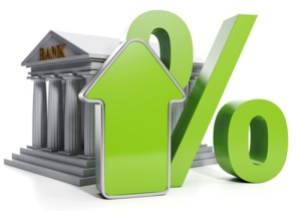Is it too early to raise the interest rate? What if the Fed would do the unthinkable thing? Well, Citibank thinks the Fed will increase the rate anyway, and here

. In the previous article on my case for initiating position on REITs, I’d like to look at stock and bond, how’d they do if the FED raise rate:
-
Stocks have posted gains before and after the first rate hike.

Source: Fidelity Investments (AART), as of Sep. 30, 2017. Fidelity Investments proprietary analysis of historical asset class performance, using data from indexes from Bank of America Merrill Lynch, Barclays, Fidelity Investments, Morningstar. Past performance is no guarantee of future results.
2. Bonds have typically recovered from the first rate hike.

Source: Fidelity Investments (AART), as of Sep. 30, 2017. Fidelity Investments proprietary analysis of historical asset class performance, using data from indexes from Bank of America Merrill Lynch, Barclays, Fidelity Investments, Morningstar. Past performance is no guarantee of future results.
3. High-dividend payers have underperformed around the first rate increase.

Source: Standard & Poor’s, Fidelity Investments (AART), as of Feb. 28, 2018. High-dividend yielders include the Utilities and Telecommunication Services sectors and the following industries: Real Estate Investment Trusts, Food& Staples Retailing, Household & Personal Products, and Commercial & Professional Services. Sectors and industry groups are weighted according to their market capitalization in the S&P 500 Index, and returns are expressed as non-annualized geometric averages. Past performance is no guarantee of future results.
4. When the late cycle starts, performance changes.
You may be wondering whether a rate hike indicates that riskier investments might face headwinds, and thus, more defensive investments might perform better. As the charts above show, the first rate hike might not be the right time for such a move. The first rate hike usually comes during the mid phase of the business cycle, and on average it has been two years before the late cycle begins. When the business cycle does transition to the late phase, there have been some major performance changes, based on historical averages.

Source: Fidelity Investments (AART), as of Marc 31, 2018. Fidelity Investments proprietary analysis of historical asset class performance, using data from indexes from Bank of America Merrill Lynch, Barclays, Fidelity Investments, Morningstar. Past performance is no guarantee of future results.
5. Defensive sectors led in the late cycle.

Using market history as a guide, the shift from mid cycle to late cycle has come with sector leadership changes, with info tech and industrials cycling out of leadership positions, and utilities, energy, health care, materials, and consumer staples performing better, on a relative basis.
Source: Fidelity Investments (AART), as of Jul. 31, 2017.
What it means for you and me?
If you are considering making portfolio decisions based on the rate hike, you may want to keep history in mind. The start of the late phase of the business cycle has seen big changes in relative performance of different types of investments based on historical averages, but the first rate hike hasn’t been a showstopper. History shows that you can expect some volatility, but if you have a diversified portfolio you may be ready to handle it.
And of course, you can see Utilities and Tel (D, T, VZ) go down ~5%, but at the same time their yield is also close to 5%, in the end it’s the cashflow that’s matter, not the share price. Timing the market is nice, it can result higher yield, but time in the market is better. I see some investor in 100% cash, but they really don’t have any gut to make anymore on Monday either. Greed got the better of them :). Long journey tests horse’s power.

Leave a Reply